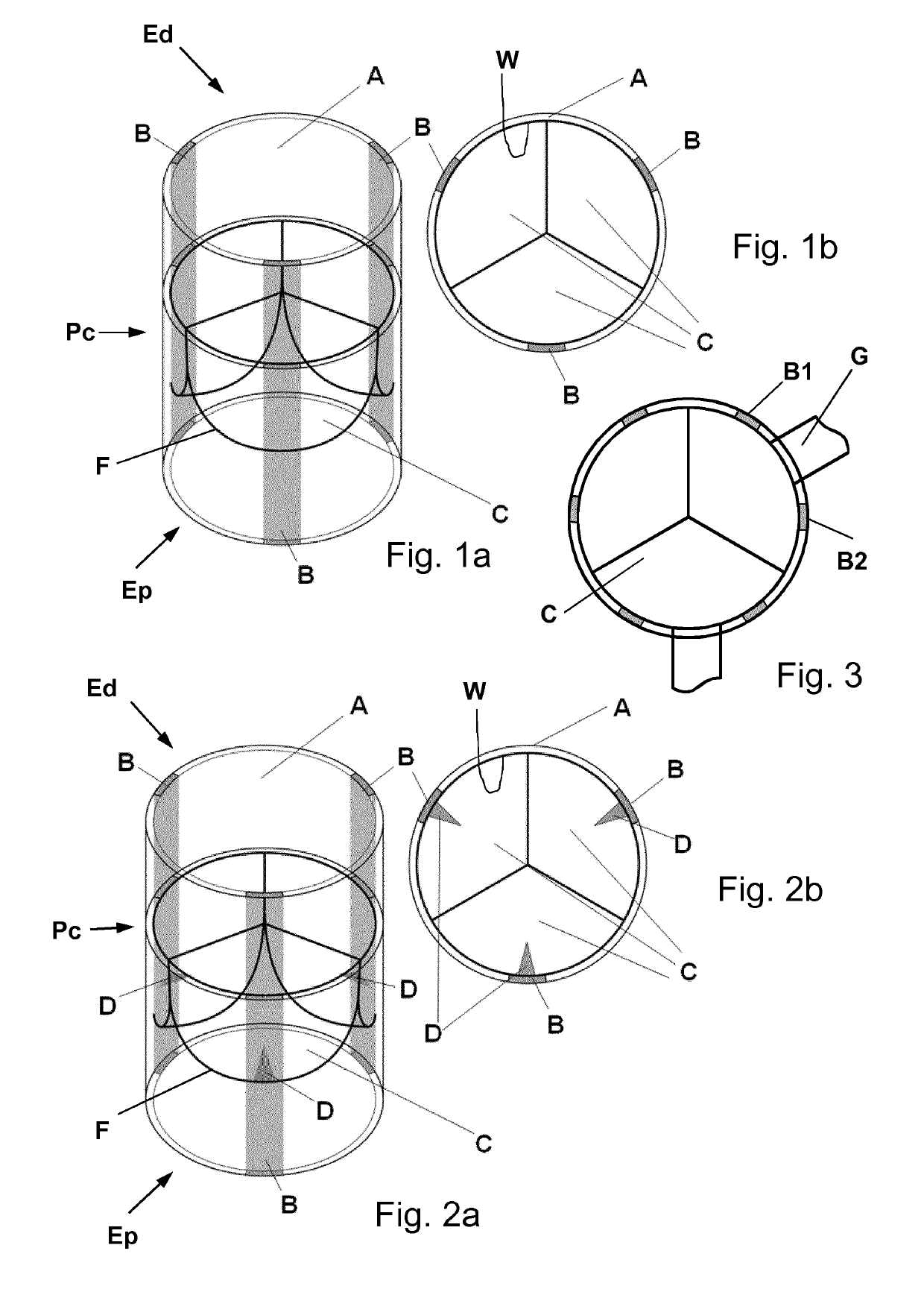Biological heart valve replacement, particularly for pediatric patients, and manufacturing method
a heart valve and biotechnology, applied in the field of biological heart valve replacement, can solve the problems of lack of growth-adaptive capacity, prone to thromboembolic complications of metal-based “mechanoprostheses” and other problems, to achieve the effect of supporting the maintenance of a physiological geometry of the heart valve and improving the “growth” adaptation
- Summary
- Abstract
- Description
- Claims
- Application Information
AI Technical Summary
Benefits of technology
Problems solved by technology
Method used
Image
Examples
Embodiment Construction
[0050]In the following, exemplary heart valve replacements are illustrated as a three-leaflet or tricuspid valves. However, it will be appreciated by the skilled person that such valve replacements may be configured to have just two leaflets or a larger number of leaflets depending on the intended application.
[0051]The biological heart valve replacement shown in FIGS. 1a and 1b comprises a tubular segment A having a proximal end Ep, a distal end Ed and a central portion Pc arranged between said proximal and distal ends and defining a longitudinal direction of the valve. The valve further comprises three inner leaflets C attached in hinge-like manner to respective connection zones F at an inner wall W region of the central portion. The inner leaflets are movable between a closing position as shown in FIGS. 1a and 1b and an opening position (not shown here) of the valve where the inner leaflets are flipped towards the valve's inner wall. The tubular segment comprises three tubular gro...
PUM
| Property | Measurement | Unit |
|---|---|---|
| diameter | aaaaa | aaaaa |
| length | aaaaa | aaaaa |
| length | aaaaa | aaaaa |
Abstract
Description
Claims
Application Information
 Login to View More
Login to View More - R&D
- Intellectual Property
- Life Sciences
- Materials
- Tech Scout
- Unparalleled Data Quality
- Higher Quality Content
- 60% Fewer Hallucinations
Browse by: Latest US Patents, China's latest patents, Technical Efficacy Thesaurus, Application Domain, Technology Topic, Popular Technical Reports.
© 2025 PatSnap. All rights reserved.Legal|Privacy policy|Modern Slavery Act Transparency Statement|Sitemap|About US| Contact US: help@patsnap.com

